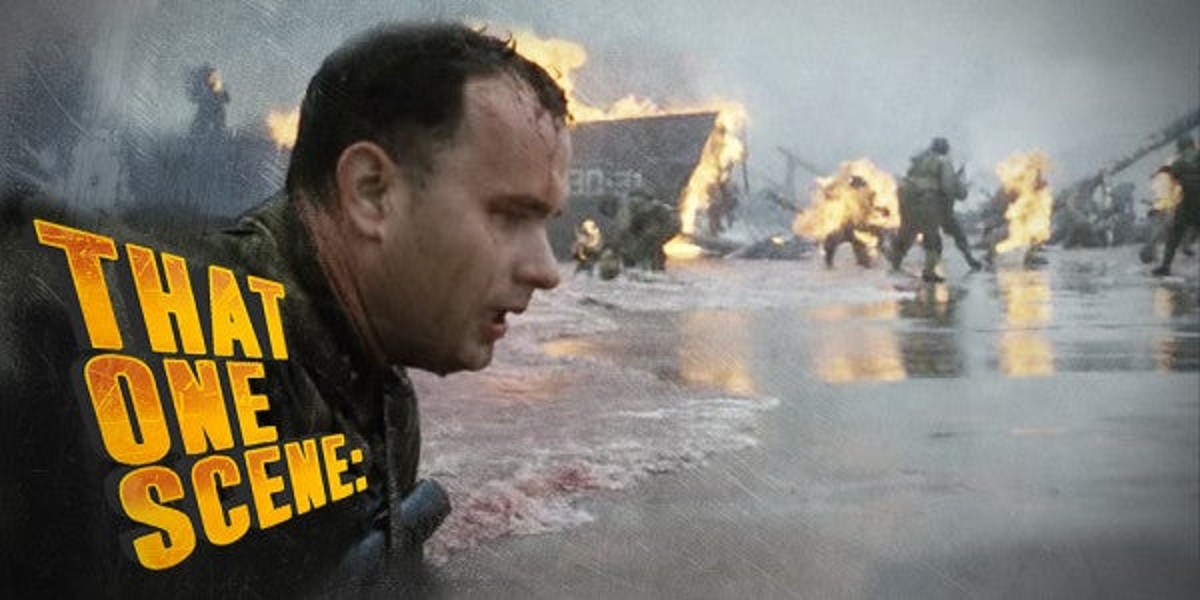

Welcome to That One Scene, a semi-regular series in which Task & Purpose writers wax nostalgic about that one scene from a beloved movie.
Editor’s note: This article was originally published on July 26, 2018.
On July 24, 1998, Steven Spielberg gave American audiences one of the greatest World War II films of all time when Saving Private Ryan premiered.
The war drama, set during the Normandy landings, follows a squad of Army Rangers tasked with rescuing a paratrooper whose three brothers have all been killed in combat. Led by Tom Hanks’ Capt. John Miller, the Rangers set out in search of one soldier among thousands, lost in a hellscape of death. Day after day, they’re forced to wonder whether saving one man to minimize a family’s grief is worth all the risk.
Spielberg dwells on the costs of war, nowhere more poignantly — and influentially — than in one of the movie’s first scenes, a 20-minute gut-punch as U.S. soldiers land at Omaha Beach on D-Day:
As soon as the ramp lowers on the Higgins Boats, German machine-gun fire rakes the bow. Of those lucky enough to make it over the side, many die in the water. The ones who make it to the beach are torn apart by small arms, artillery fire, and shrapnel.
That’s just the first minute.

“One of the things that really got me about this was the randomness of death, and the randomness of wounding,” Marine veteran Dale Dye, who worked as the film’s military advisor, told Task & Purpose. “That’s there because we wanted people to get the feeling that despite what you see in movies and what you read in books, death in hellacious combat like there was on Omaha Beach can sometimes be very random, and it can be shocking because it’s so close.”
Related: ‘Independence Day’ Gave Us The Greatest Presidential Address In Recent History
In this filmic world, failure is always an option. There’s no glorious charge across the field. The in-the-mud, ground-eye view of combat viewers got in that scene, what Dye calls “asses and elbows,” places the viewer directly in the action, but not as an idle spectator. Instead, you’re there on the beach, terrified, unsure if you’ll make it out.
“That’s how you tend to see firefights if you’re involved in it,” Dye said. “You see the other guy’s butt and his elbows, and everybody’s down as far as they can get,” adding that it’s precisely that point of view that Spielberg wanted to convey in the scene.
To make that happen, Dye was tasked with corralling roughly 1,000 extras — reserve members of the Irish Defense Forces — and in the span of a week, teaching them how to wear World War II era U.S. infantry uniforms, which “were a nightmare,” Dye said. “We had to go from the helmet on downward to the leggings.”

“I knew whatever else we did with that film, that sequence was going to live on.”
Next came weapons training on Browning Automatic Rifles, M1 Garands, M1 Carbines, and Thompson submachine guns, which included courses in combat reloads, “so when fired and ran out of ammo, they wouldn’t just stand there and look like deer in the headlights,” he said. “Instead, they’d reload and get back into action.”
The idea was that once the cameras were rolling — about four or five cameras to capture the wide shots, and a number of handhelds for cameramen running through across the beach — there’d be no stopping the action.
“I told Steven Spielberg ‘Listen, boss, this is an attack in progress. When they go, we’re just going to have to let it go,’ and he said ‘OK, OK, I love it,’” Dye told T&P.; Shooting from in the middle of all that action is in many ways what set the Omaha Beach scene apart from other combat scenes that came before it: It captured the chaos because it was chaotic.
But making that “attack in progress” entails many small and often overlooked details, drawn from firsthand accounts of survivors: dead fish wash onto the beach, killed by thousands of rounds of HE exploding across the coast; a grievously wounded soldier picks up his severed arm; and troops flounder in the water as the sound of artillery dies off, then surges back as they resurface.
“When they get underwater it’s absolute dead silence, then they surface and the roaring noise comes back,” said Dye, a combat-decorated Vietnam veteran and three-time Purple Heart recipient who’s forged a second career as a military advisor for Hollywood hits. “I thought that was absolutely brilliant. And I’ve heard that, I’ve seen that happen. It’s shocking when things go silent and there’s no reason for them to go silent.”
The effect is that this depiction of combat — which left an estimated 10,000 Allied soldiers dead, wounded, or missing, during the beach landings 74 years ago — is somehow relatable to those of us who never witnessed it first hand.
“I had seen a video replay of several sequences, but when it was cut together, my jaw dropped open,” Dye said. “I think I’ve seen every war movie there is, but I had never seen anything like that. It just put me right there.
“I wasn’t there in 1944 in June on Omaha Beach, but seeing that I somehow felt I was,” he added. “It was that transporting. I knew whatever else we did with that film, that sequence was going to live on.”